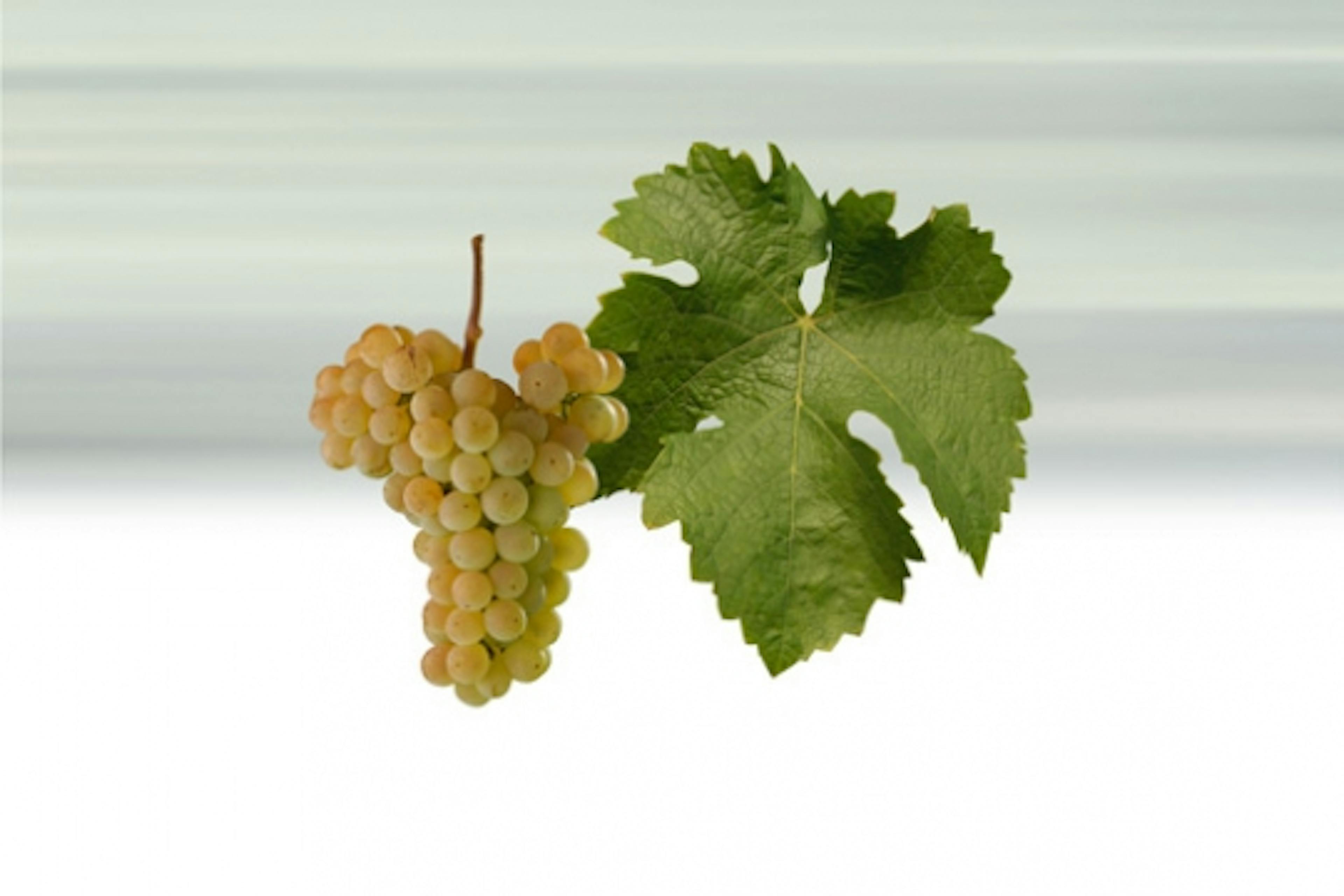Variety detail
Kerner
About
0.14 of total vineyard plantings.
Entered in the State Register of Grape Varieties in 2001.
This variety, whose origins lie in an unlikely crossing of Black Trollinger with White Riesling, was developed in Weinsberg in the German region of Württemberg by A. Herold in 1929. It was first registered in Germany in 1969 for all German wine regions and was even given protected patent status. The grape was named after A. Kerner, a doctor and poet from Weinsberg, who recommended his patients take a glass of wine as the best natural medicine.
The skins are thick, the juice is succulent, lush and sweet, with a Riesling-Muscat nose and very pleasant to taste.

Today Kerner is planted on approximately 7,500 hectares and is the fourth most cultivated grape variety in Germany, coming after Riesling, Müller-Thurgau and Sylvaner. It is most cultivated in the Pfalz, Rheinhessen, Mosel and Württemberg.
The leaves are medium in size, dark-green with coarse surfaces. Bunches are of medium size, conical and of medium density. Berries are full golden-green with brownish “faces”. The skins are thick, the juice is succulent, lush and sweet, with a Riesling-Muscat nose and very pleasant to taste. Ripening is early and very good. It is not prone to chlorosis in calcareous soils. Frost-resistance is excellent, resistance to peronospera fungus is good and against oidium and grey rot somewhat lower. The growth is abundant, therefore suckers should be removed during the vegetation period in order not to creat dense foliage. Depending on the way the vines are pruned, they are capable of coming up with wines of special attributes every year.
The wine goes excellently with a variety of starters including sea food, grilled veal, fish and smoked meats, asparagus and many varieties of cheese, especially cream cheese.
The wine is golden-green to straw-yellow in colour, has a nose full of fresh aromatic substances which remind one of the more concentrated aromas of the noble Riesling, sometimes even with muscatty overtones. It has a full body and, with temperature-controlled fermentation, can achieve a fresh to crisp style of round, elegant and very attractive wine for daily consumption. Its prerequisite lies in the fact that it makes a good quality wine even in worse vintages. It does not thrive in very dry conditions. In such circumstances the wine is likely to have bitter overtones as if it had undergone oxidative maturation. Of all new cultivars Kerner is the one whose wine most resembles Riesling and as such it can well be able to give wines that attain special-attribute status, even as far as selection of individual berries (Auslese, Beerenauslese).
The wine goes excellently with a variety of starters including sea food, grilled veal, fish and smoked meats, asparagus and many varieties of cheese, especially cream cheese. Young wines are best served in glasses designed for young wines at temperatures between 7-8 °C and older wines between 9-10 °C. Only highly mature wines with special attributes should be served at between 10-11 °C. Wines that have been produced through correctly controlled technology may adorn the festive table the same way as Rieslings do.
Basic characteristics of quality wines:
Golden-green colour, intense Riesling nose with substantially higher spiciness and with honeyed undertones. Wines are full-bodied with a good attack and long persitence in the mouth, occasionally with a slightly bitter finish.
Translation © Helena & John Baker 2004.




